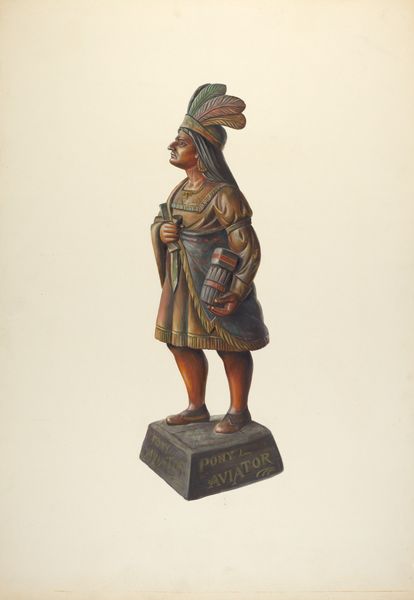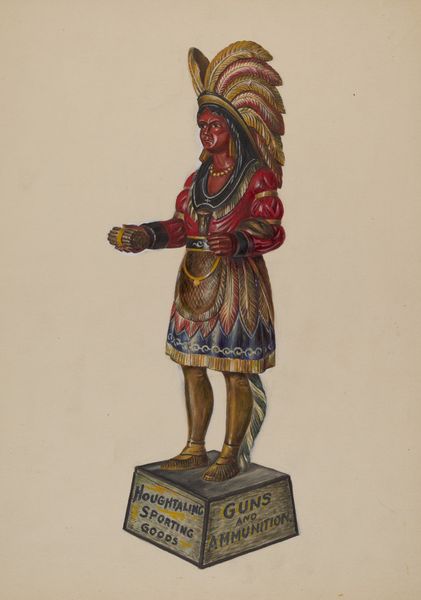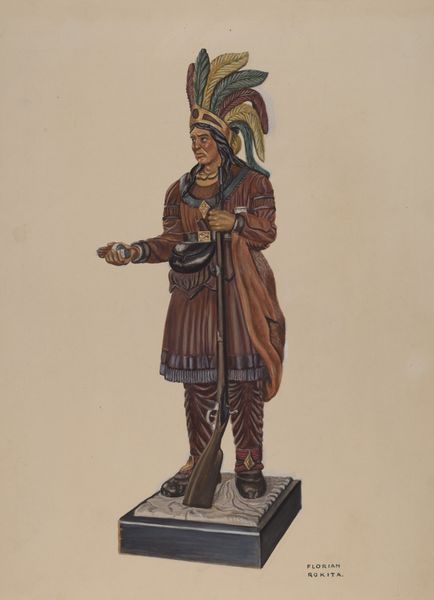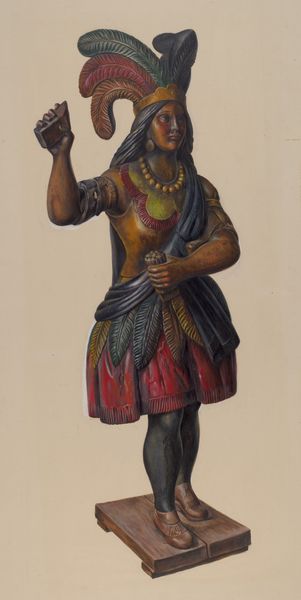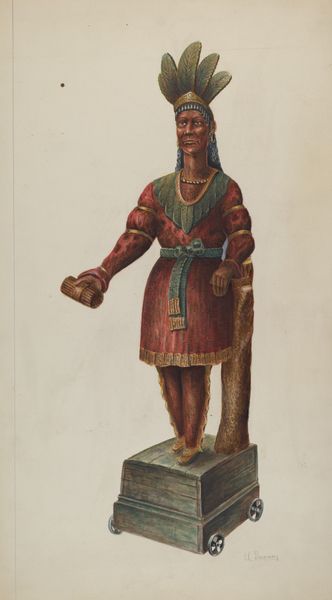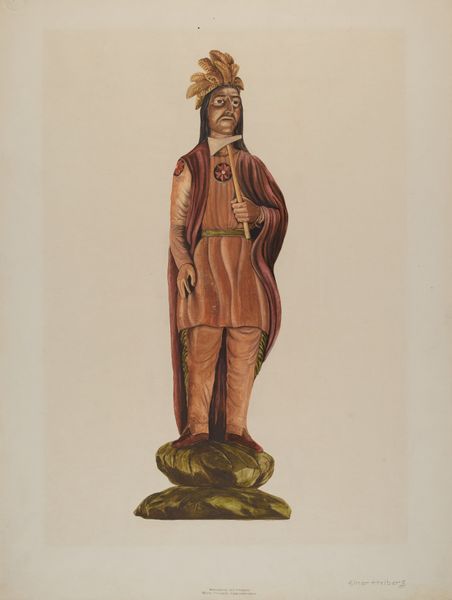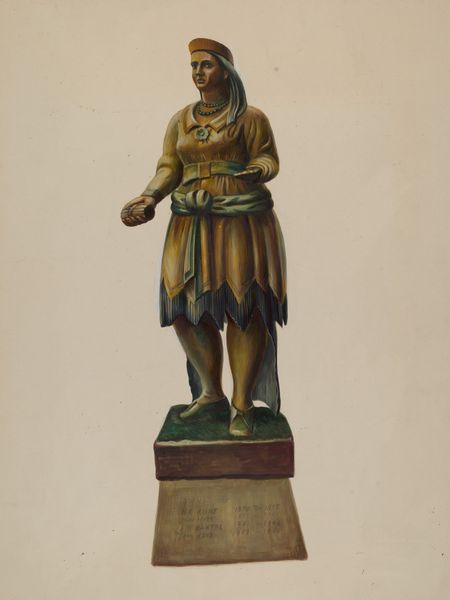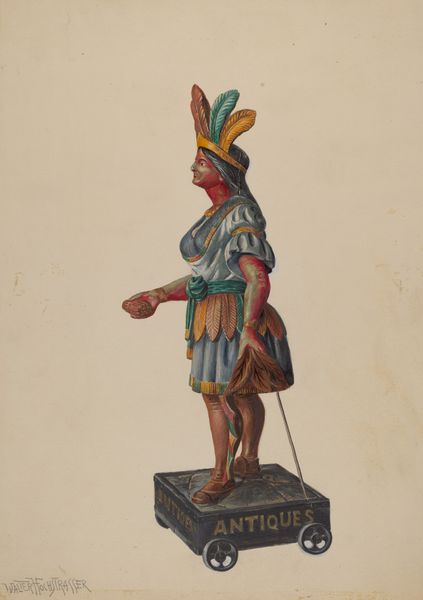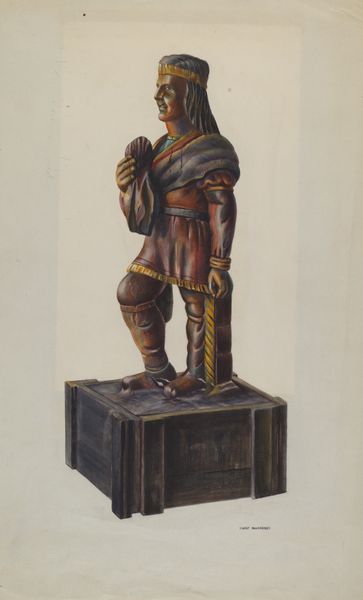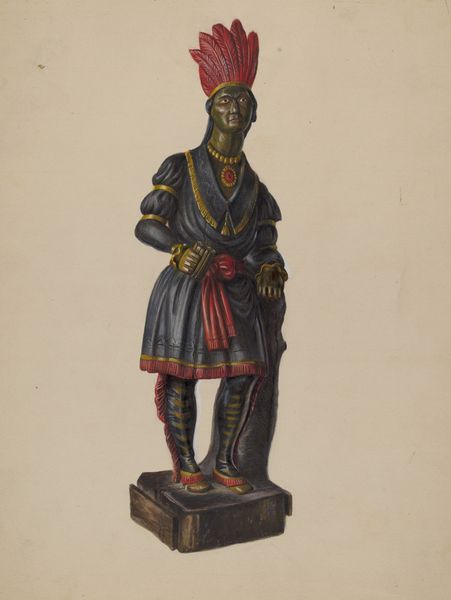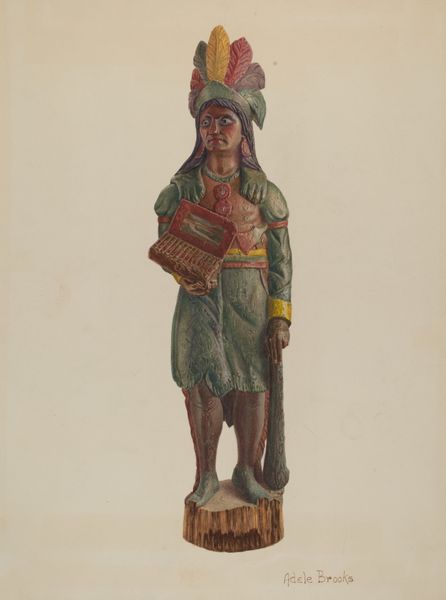
drawing, coloured-pencil
#
portrait
#
drawing
#
coloured-pencil
#
caricature
#
indigenism
#
coloured pencil
#
folk-art
#
watercolour illustration
#
watercolor
#
realism
Dimensions: overall: 35.5 x 24.6 cm (14 x 9 11/16 in.)
Copyright: National Gallery of Art: CC0 1.0
Curator: This piece, titled "Cigar Store Indian," was rendered circa 1936 by Walter Hochstrasser, utilizing coloured pencil and drawing techniques. What’s your initial response to this depiction? Editor: Well, immediately I am struck by its stillness, almost like a preserved memory. It feels staged, somehow, not as a celebration of indigenous culture, but as an objectification of it. Curator: Absolutely, it brings up complex cultural associations, particularly regarding commercial art forms of that era. These figures were commonly used to attract customers to tobacco shops. The cigar store Indian holds significant, and often problematic, symbolism. Editor: Problematic is putting it mildly. It reduces an entire group of people to a stereotypical representation, devoid of complexity. And in the context of the systematic oppression and genocide of Indigenous peoples, this object functions as a form of cultural appropriation and erasure. Curator: Indeed, the symbolic weight here is considerable. Consider the figure’s stoic expression, the placement of the rifle, and the offering of what looks to be a handful of tobacco. Each element invites multiple interpretations within the historical context. The headdress itself, so vibrantly coloured in the rendering, is a potent emblem of power, and that representation has carried over time. Editor: I agree. But this vibrancy doesn't necessarily signal respect. Often, such imagery serves to exoticize the 'Other', creating a safe, marketable caricature for a consumer base largely unfamiliar with, or indifferent to, the realities faced by Indigenous communities. How does it reconcile within the wider history of settler colonialism and capitalism? Curator: An excellent point. By visually examining works like Hochstrasser's "Cigar Store Indian", we gain an understanding of how cultural artifacts contribute to larger societal narratives and memory. They preserve not just a depiction but a loaded cultural narrative, that lives within our memories. Editor: Exactly. So, the function of artworks like these is to serve as critical touchstones, pushing for accountability and understanding. It also serves as a tool of anti-colonial pedagogy that enables the broader audiences to dismantle harmful representations. Curator: Ultimately, it allows us to critically look at symbols—and perhaps find avenues for transforming those into more respectful and accurate cultural representations. Editor: Yes, understanding the art’s journey through social-political history reveals the evolving relationship between power, representation, and societal consciousness. It helps with cultural reckonings!
Comments
No comments
Be the first to comment and join the conversation on the ultimate creative platform.


